chemistry
There is so much to tell about Constructed Wetlands ...

BOD
(BZV in Dutch) BOD5 stands for Biochemical Oxygen Demand.
This is the mass amount of oxygen (O2) consumed by microorganisms per liter of water, for a continuous period of 5 days, at 20 ° C.
That sounds very complicated, but it is more or less a standard laboratory setup to determine how much oxygen is needed to bring a certain type of water into a stable, natural (and therefore environmentally friendly) condition. It is expressed in milligrams per liter.
The analysis is done according to NEN 6634.
The efficiency of our filters is 98%.
The strictest discharge standard (IBA class 3) is 40 mg / l
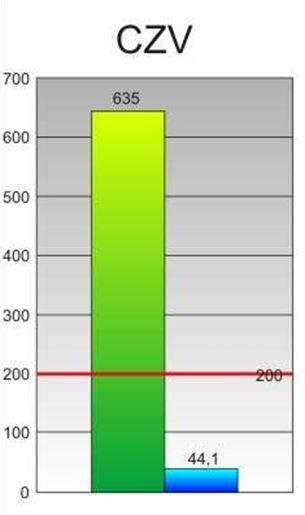
COD
(CZV in Dutch) COD stands for Chemical Oxygen Demand.
This is the amount of oxygen (O2) consumed by chemical oxidation.
It is expressed in milligrams per liter.
The analysis is done according to NEN 6633.
The efficiency of our filters is 92%.
The strictest standard (IBA class 3) is 200 mg / l.
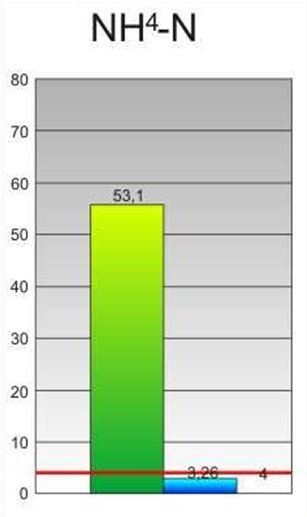
NH4-N
NH4-N stands for Ammonium Nitrogen.
It is expressed in milligrams per liter.
The determination is in accordance with NEN-6640.
The average efficiency of our filters is 89%.
The strictest standard (IBA class 3) is 4 mg / l.
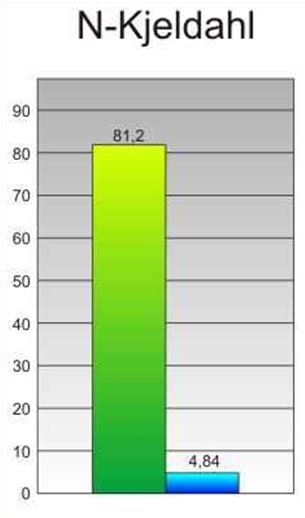
Kj-N
442/5000
N-Kjeldahl is the mass amount of Kjeldahl nitrogen (Kj-N).
This is made up of organically bound nitrogen and ammonium (NH4) nitrogen.
It is expressed in milligrams per liter.
The determination goes in accordance with NEN-ISO 5563.
The efficiency of our filters is about 90%.
There is no discharge standard for it. But as said: it consists (largely) of ammonium nitrogen. And there is a standard for that, as you can see on the previous graph.

Tot. N
N-total is the total amount of nitrogen (N).
It consists of: Kjeldahl nitrogen (organically bound N and NH4-N),
nitrate (NO3) nitrogen and nitrite (NO2) nitrogen.
It is expressed in milligrams per liter.
The average efficiency of our filters is about 40%, but, as you can see from the previous two graphs, N removal is a complex whole!
The most harmful forms of nitrogen compounds are thus very well eliminated.
The strictest standard (IBA class 3) is 60 mg / l.
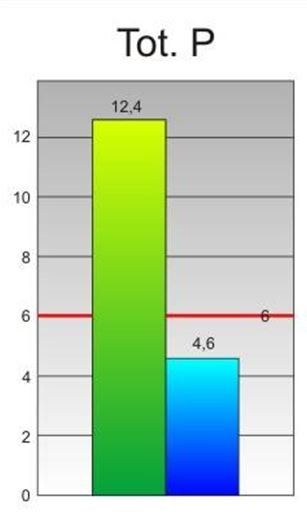
Tot. P
P-total is the total amount of phosphorus (P) in the various phosphorus compounds.
It is expressed in milligrams per liter.
The analysis is done according to NEN 6663.
The efficiency of our filters is 60%, it should be noted that we can now achieve slightly better values (incidentally up to 93%), since we use iron particles as additives. In Ortho-phosphate, we achieve an average of about 65% removal.
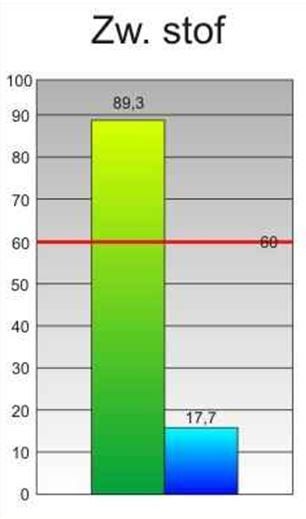
SS
Suspended Solids (also often referred to as 'undissolved matter') represents the number of milligrams of solid material per liter.
Because the sample of the waste water to be treated is taken into the pumping station (ie after the septic tank and grease trap), a considerable part of the suspended matter has actually already been removed, the actual starting value is usually set at 200 mg / l.
The efficiency between the pump sump and the filter is about 80% and even that is not entirely pure because we were often below the detection limit of 5 mg / l!
This floating material is generally a very fine material and is harmful to fish, for example, because it can settle on the gills. Surface water therefore benefits from a concentration not exceeding 10 mg / l.
Furthermore, the clarity of water also strongly depends on the percentage of suspended matter.
The strictest discharge standard is 60 mg / l.
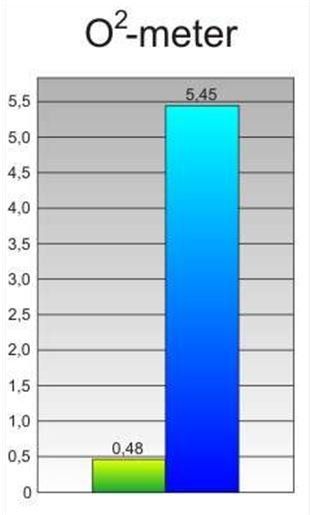
O2 meter
O2 meter stands for the number of milligrams of oxygen per liter.
Wastewater is usually very low in oxygen.
But in the constructed wetlands this is improved seriously!
The efficiency of our filters is approximately 2428%.
There is no discharge standard for this, but swimming water requires 5 mg / l.
It remains interesting to compare with each other: waste water is very low in oxygen and has a high oxygen requirement to be recognizable as healthy again (see the BOD and COD graphs). After the water has passed through a constructed wetland, that oxygen demand is almost completely fulfilled AND the water is again quite oxygenated….
The usual sewage treatment plants, as well as the compact systems, try to achieve this process by means of aerators: pumps that have to run continuously. The constructed wetlands do it for free - this is partly due to the plants and the short, impulse input of the wastewater…. A matter of intelligent design!
To be honest, there is also a dark side: there is a relationship between the nitrate content and the oxygen richness. Nitrate (you can already tell from the 'NO3') is a bond of oxygen to nitrogen. If we want to reduce the nitrate content, we have to decrease the oxygen content in the filter. We can indeed adjust this to some extent, but then this O2 meter number automatically decreases.
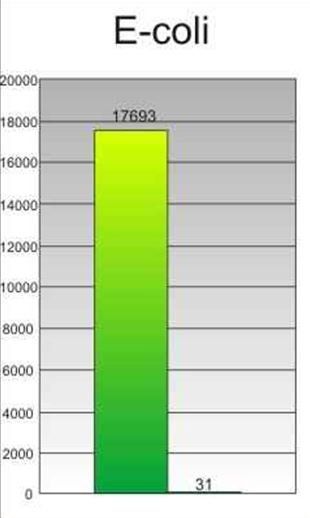
E-coli
E-coli stands for Escherichia coliforms.
It concerns a bacterium from (among other things) our own intestines, which are usually in feces. That is why they occur in large numbers in wastewater. They are useful in our intestines, but if they get into the wrong place in our body, they are pathogenic.
The efficiency of our systems is approximately 99.98%.
There is no discharge standard for it, but it is clear that such a high removal rate says a lot about the cleanliness of the water to be discharged.


